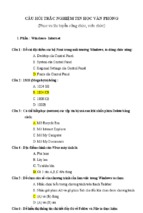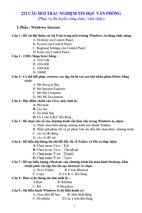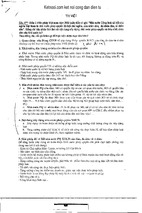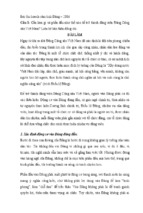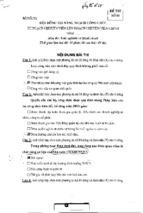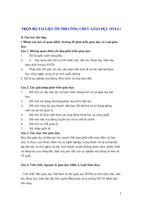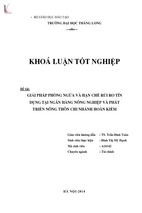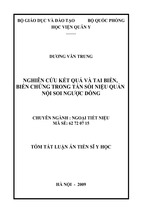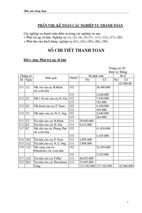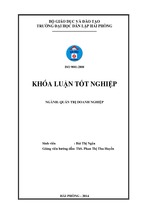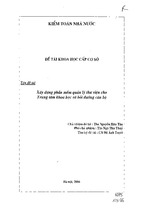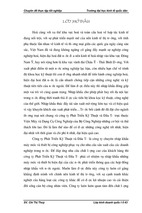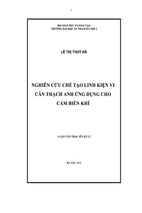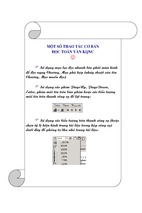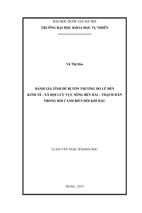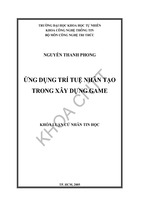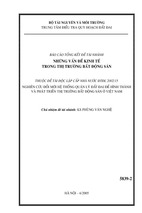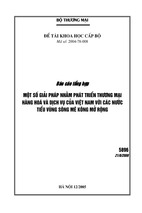Free ebooks ==> www.AccountingPdfBooks.com
Free ebooks ==> www.AccountingPdfBooks.com
Free ebooks ==> www.AccountingPdfBooks.com
Equity Asset
Valuation
CFA Institute is the premier association for investment professionals around the world, with
over 130,000 members in 151 countries and territories. Since 1963 the organization has developed and administered the renowned Chartered Financial Analyst® Program. With a rich
history of leading the investment profession, CFA Institute has set the highest standards in
ethics, education, and professional excellence within the global investment community and is
the foremost authority on investment profession conduct and practice. Each book in the CFA
Institute Investment Series is geared toward industry practitioners along with graduate-level
finance students and covers the most important topics in the industry. The authors of these
cutting-edge books are themselves industry professionals and academics and bring their wealth
of knowledge and expertise to this series.
Equity Asset
Valuation
Third Edition
Jerald E. Pinto, CFA
Elaine Henry, CFA
Thomas R. Robinson, CFA
John D. Stowe, CFA
with
Stephen E. Wilcox, CFA
Cover image: © ER_09/Shutterstock
Cover design: Wiley
Copyright © 2004, 2007, 2015 by CFA Institute. All rights reserved.
Published by John Wiley & Sons, Inc., Hoboken, New Jersey.
Published simultaneously in Canada.
No part of this publication may be reproduced, stored in a retrieval system, or transmitted in any form or by
any means, electronic, mechanical, photocopying, recording, scanning, or otherwise, except as permitted under
Section 107 or 108 of the 1976 United States Copyright Act, without either the prior written permission of
the Publisher, or authorization through payment of the appropriate per-copy fee to the Copyright Clearance
Center, Inc., 222 Rosewood Drive, Danvers, MA 01923, (978) 750-8400, fax (978) 646-8600, or on the Web at
www.copyright.com. Requests to the Publisher for permission should be addressed to the Permissions Department,
John Wiley & Sons, Inc., 111 River Street, Hoboken, NJ 07030, (201) 748-6011, fax (201) 748-6008, or online at
www.wiley.com/go/permissions.
Limit of Liability/Disclaimer of Warranty: While the publisher and author have used their best efforts in preparing
this book, they make no representations or warranties with respect to the accuracy or completeness of the contents
of this book and specifically disclaim any implied warranties of merchantability or fitness for a particular purpose.
No warranty may be created or extended by sales representatives or written sales materials. The advice and strategies
contained herein may not be suitable for your situation. You should consult with a professional where appropriate.
Neither the publisher nor author shall be liable for any loss of profit or any other commercial damages, including
but not limited to special, incidental, consequential, or other damages.
For general information on our other products and services or for technical support, please contact our Customer
Care Department within the United States at (800) 762-2974, outside the United States at (317) 572-3993, or
fax (317) 572-4002.
Wiley publishes in a variety of print and electronic formats and by print-on-demand. Some material included with
standard print versions of this book may not be included in e-books or in print-on-demand. If this book refers to
media such as a CD or DVD that is not included in the version you purchased, you may download this material at
http://booksupport.wiley.com. For more information about Wiley products, visit www.wiley.com.
ISBN 978-1-119-10426-1 (Hardcover)
ISBN 978-1-119-10462-9 (ePDF)
ISBN 978-1-11910464-3 (ePub)
Printed in the United States of America.
10 9 8 7 6 5 4 3 2 1
CONTENTS
Foreword�xi
Preface�xiii
Acknowledgments�xv
About the CFA Investment Series�
xvii
Chapter 1
Equity Valuation: Applications & Processes�
Learning Outcomes�
1. Introduction�
2. Value Definitions and Valuation Applications�
2.1. What Is Value?�
2.2. Applications of Equity Valuation�
3. The Valuation Process�
3.1. Understanding the Business�
3.2. Forecasting Company Performance�
3.3. Selecting the Appropriate Valuation Model�
3.4. Converting Forecasts to a Valuation�
3.5. Applying the Valuation Conclusion: The Analyst’s Role and Responsibilities�
4. Communicating Valuation Results�
4.1. Contents of a Research Report�
4.2. Format of a Research Report�
4.3. Research Reporting Responsibilities�
5. Summary�
References�
Problems�
1
1
2
2
2
5
7
8
17
18
25
26
28
28
30
32
33
34
35
Chapter 2
Return Concepts�
39
Learning Outcomes�
1. Introduction�
2. Return Concepts�
39
40
40
v
Free ebooks ==> www.AccountingPdfBooks.com
vi
Contents
2.1. Holding Period Return�
2.2. Realized and Expected (Holding Period) Return�
2.3. Required Return�
2.4. Expected Return Estimates from Intrinsic Value Estimates�
2.5. Discount Rate�
2.6. Internal Rate of Return�
3. The Equity Risk Premium�
3.1. Historical Estimates�
3.2. Forward-Looking Estimates�
4. The Required Return on Equity�
4.1. The Capital Asset Pricing Model�
4.2. Multifactor Models�
4.3. Build-Up Method Estimates of the Required Return on Equity�
4.4. The Required Return on Equity: International Issues�
5. The Weighted Average Cost of Capital�
6. Discount Rate Selection in Relation to Cash Flows�
7. Summary�
References�
Problems�
40
41
41
43
45
46
47
48
57
60
60
68
75
79
80
82
82
84
85
Chapter 3
Introduction to Industry and Company Analysis�
91
Learning Outcomes�
1. Introduction�
2. Uses of Industry Analysis�
3. Approaches to Identifying Similar Companies�
3.1. Products and/or Services Supplied�
3.2. Business-Cycle Sensitivities�
3.3. Statistical Similarities�
4. Industry Classification Systems�
4.1. Commercial Industry Classification Systems�
4.2. Governmental Industry Classification Systems�
4.3. Strengths and Weaknesses of Current Systems�
4.4. Constructing a Peer Group�
5. Describing and Analyzing an Industry�
5.1. Principles of Strategic Analysis�
5.2. External Influences on Industry Growth, Profitability, and Risk�
6. Company Analysis�
6.1. Elements That Should be Covered in a Company Analysis�
6.2. Spreadsheet Modeling�
7. Summary�
References�
Problems �
91
92
92
93
93
94
95
96
96
100
101
102
106
109
129
135
136
139
139
142
143
Contents�
vii
Chapter 4
Industry and Company analysis�
Learning Outcomes�
1. Introduction�
2. Financial Modeling: An Overview�
2.1. Income Statement Modeling: Revenue�
2.2. Income Statement Modeling: Operating Costs�
2.3. Income Statement Modeling: Non-Operating Costs�
2.4. Income Statement Modeling: Other Items�
2.5. Balance Sheet and Cash Flow Statement Modeling�
2.6. Scenario Analysis and Sensitivity Analysis�
3. The Impact of Competitive Factors on Prices and Costs�
4. Inflation and Deflation�
4.1. Sales Projections with Inflation and Deflation�
4.2. Cost Projections with Inflation and Deflation�
5. Technological Developments�
6. Long-Term Forecasting�
7. Building a Model�
7.1. Industry Overview�
7.2. Company Overview�
7.3. Construction of Pro Forma Income Statement�
7.4. Construction of Pro Forma Cash Flow Statement and
Balance Sheet�
7.5. Valuation Inputs�
8. Summary�
References�
Problems�
147
147
148
148
148
154
167
172
172
174
176
184
184
190
192
203
209
209
210
211
217
223
223
224
224
Chapter 5
Discounted Dividend Valuation�
Learning Outcomes�
1. Introduction�
2. Present Value Models�
2.1. Valuation Based on the Present Value of Future Cash Flows�
2.2. Streams of Expected Cash Flows�
3. The Dividend Discount Model�
3.1. The Expression for a Single Holding Period�
3.2. The Expression for Multiple Holding Periods�
4. The Gordon Growth Model�
4.1. The Gordon Growth Model Equation�
4.2. The Links Among Dividend Growth, Earnings Growth, and Value
Appreciation in the Gordon Growth Model�
4.3. Share Repurchases�
4.4. The Implied Dividend Growth Rate�
4.5. The Present Value of Growth Opportunities�
4.6. Gordon Growth Model and the Price-to-Earnings Ratio�
231
231
232
233
233
235
241
241
242
244
245
252
252
253
254
256
viii
4.7. Estimating a Required Return Using the Gordon Growth Model�
4.8. The Gordon Growth Model: Concluding Remarks�
5. Multistage Dividend Discount Models�
5.1. Two-Stage Dividend Discount Model�
5.2. Valuing a Non-Dividend-Paying Company�
5.3. The H-Model�
5.4. Three-Stage Dividend Discount Models�
5.5. Spreadsheet (General) Modeling�
5.6. Estimating a Required Return Using Any DDM�
5.7. Multistage DDM: Concluding Remarks�
6. The Financial Determinants of Growth Rates�
6.1. Sustainable Growth Rate�
6.2. Dividend Growth Rate, Retention Rate, and ROE Analysis�
6.3. Financial Models and Dividends�
7. Summary�
References�
Problems�
Contents
259
259
260
261
264
265
267
272
274
276
276
276
278
281
283
286
287
Chapter 6
Free Cash Flow Valuation�
Learning Outcomes�
1. Introduction to Free Cash Flows�
2. FCFF and FCFE Valuation Approaches�
2.1. Defining Free Cash Flow�
2.2. Present Value of Free Cash Flow�
2.3. Single-Stage (Constant-Growth) FCFF and FCFE Models�
3. Forecasting Free Cash Flow�
3.1. Computing FCFF from Net Income�
3.2. Computing FCFF from the Statement of Cash Flows�
3.3. Noncash Charges�
3.4. Computing FCFE from FCFF�
3.5. Finding FCFF and FCFE from EBIT or EBITDA�
3.6. FCFF and FCFE on a Uses-of-Free-Cash-Flow Basis�
3.7. Forecasting FCFF and FCFE�
3.8. Other Issues in Free Cash Flow Analysis�
4. Free Cash Flow Model Variations�
4.1. An International Application of the Single-Stage Model�
4.2. Sensitivity Analysis of FCFF and FCFE Valuations�
4.3. Two-Stage Free Cash Flow Models�
4.4. Three-Stage Growth Models�
5. Nonoperating Assets and Firm Value�
6. Summary�
References�
Problems�
295
295
296
296
297
298
299
301
301
305
307
312
318
320
322
327
333
333
334
336
343
345
346
348
348
Contents�
ix
Chapter 7
Market-Based Valuation: Price and Enterprise Value Multiples�
Learning Outcomes�
1. Introduction�
2. Price and Enterprise Value Multiples in Valuation �
2.1. The Method of Comparables�
2.2. The Method Based on Forecasted Fundamentals�
3. Price Multiples�
3.1. Price to Earnings�
3.2. Price to Book Value�
3.3. Price to Sales�
3.4. Price to Cash Flow�
3.5. Price to Dividends and Dividend Yield�
4. Enterprise Value Multiples�
4.1. Enterprise Value to EBITDA�
4.2. Other Enterprise Value Multiples�
4.3. Enterprise Value to Sales�
4.4. Price and Enterprise Value Multiples in a Comparable Analysis: Some
Illustrative Data�
5. International Considerations When Using Multiples�
6. Momentum Valuation Indicators�
7. Valuation Indicators: Issues in Practice�
7.1. Averaging Multiples: The Harmonic Mean�
7.2. Using Multiple Valuation Indicators�
8. Summary�
References�
Problems�
361
361
362
363
363
365
366
366
399
410
417
422
426
426
432
433
433
435
437
442
442
444
449
452
454
Chapter 8
Residual Income Valuation�
Learning Outcomes�
1. Introduction�
2. Residual Income�
2.1. The Use of Residual Income in Equity Valuation�
2.2. Commercial Implementations�
3. The Residual Income Model�
3.1. The General Residual Income Model�
3.2. Fundamental Determinants of Residual Income�
3.3. Single-Stage Residual Income Valuation�
3.4. Multistage Residual Income Valuation�
4. Residual Income Valuation in Relation to Other Approaches�
4.1. Strengths and Weaknesses of the Residual Income Model�
4.2. Broad Guidelines for Using a Residual Income Model�
5. Accounting and International Considerations�
5.1. Violations of the Clean Surplus Relationship�
5.2. Balance Sheet Adjustments for Fair Value�
463
463
464
464
467
468
469
472
477
478
480
484
487
487
488
489
498
x
Contents
5.3. Intangible Assets�
5.4. Nonrecurring Items�
5.5. Other Aggressive Accounting Practices�
5.6. International Considerations�
Summary�
References�
Problems�
498
501
501
502
503
504
506
Chapter 9
Private Company Valuation�
Learning Outcomes�
1. Introduction�
2. The Scope of Private Company Valuation�
2.1. Private and Public Company Valuation: Similarities and Contrasts�
2.2. Reasons for Performing Valuations�
3. Definitions (Standards) of Value�
4. Private Company Valuation Approaches�
4.1. Earnings Normalization and Cash Flow Estimation Issues�
4.2. Income Approach Methods of Private Company Valuation�
4.3. Market Approach Methods of Private Company Valuation�
4.4. Asset-Based Approach to Private Company Valuation�
4.5. Valuation Discounts and Premiums�
4.6. Business Valuation Standards and Practices�
5. Summary�
References�
Problems�
513
513
514
514
514
516
518
520
521
527
537
545
546
553
555
556
556
Glossary�563
About the Editors and Authors�
573
About the CFA Program�
577
Index�579
Foreword
Security analysis, for whatever purpose, is incomplete without a valuation of the asset being
analyzed. So, studying the economics and finances of a business is simply preparation for that
valuation.
When I entered the investment business in 1952, I was handed the task of analyzing
and valuing about a dozen common stocks. My business school education had prepared me
to analyze the economics and finances of a business, but it came up short on the elements of
valuation techniques.
In those days, valuation thinking was still influenced by the Great Depression. Ridiculous
as it may sound today, we tried to estimate what a company’s earnings might be in the event of
a recession in GDP in the range of 10 to 15 percent, with the next step being placing a multiplier on those depressed earnings. The result was what we called “sound value.” Of course, the
resulting values did not materialize in the bull market of the following years.
The art of security analysis has evolved significantly since then. What fascinates me is
how and why the valuation techniques have evolved. The main cause, in my opinion, lies in
the accumulating evidence that U.S. and world economies have become significantly more
resilient to major declines. Today, for economically sensitive businesses, valuations tend to use
normalizing techniques rather than attempting to estimate cyclical peaks and troughs.
The valuation methods explored in this book can be applied by different types of investors, in different market environments, and for different types of transactions. When reading
Wall Street research reports or listening to financial TV programs, it is rare to see or hear a well-
designed valuation. Usually, the valuation process consists of attaching an earnings multiple to
an estimated earnings growth rate. This book provides an excellent review of the fundamentals
and techniques used to value equity assets.
No single valuation technique suits all investors in all types of transactions, and this book
adequately recognizes that fact. No matter your level of financial sophistication, you can benefit from reading it.
Paul F. Miller, Jr., CFA
xi
Preface
We are pleased to bring you Equity Asset Valuation, Third Edition. We believe this book serves
as a particularly important resource for anyone involved in estimating the value of securities
and understanding security pricing.
The content was developed in partnership by a team of distinguished academics and practitioners, chosen for their acknowledged expertise in the field, and guided by CFA Institute.
It is written specifically with the investment practitioner in mind and is replete with examples
and practice problems that reinforce the learning outcomes and demonstrate real-world applicability.
The CFA Program Curriculum, from which the content of this book was drawn, is subjected to a rigorous review process to assure that it is:
•
•
•
•
•
•
Faithful to the findings of our ongoing industry practice analysis
Valuable to members, employers, and investors
Globally relevant
Generalist (as opposed to specialist) in nature
Replete with sufficient examples and practice opportunities
Pedagogically sound
The accompanying workbook is a useful reference that provides Learning Outcome Statements, which describe exactly what readers will learn and be able to demonstrate after mastering the accompanying material. Additionally, the workbook has summary overviews and
practice problems for each chapter.
We hope you will find this and other books in the CFA Institute Investment Series helpful
in your efforts to grow your investment knowledge, whether you are a relatively new entrant or
an experienced veteran striving to keep up to date in the ever-changing market environment.
CFA Institute, as a long-term committed participant in the investment profession and a notfor-profit global membership association, is pleased to provide you with this opportunity.
The CFA Program
If the subject matter of this book interests you and you are not already a CFA Charterholder,
we hope you will consider registering for the CFA Program and starting progress toward earning the Chartered Financial Analyst designation. The CFA designation is a globally recognized
standard of excellence for measuring the competence and integrity of investment professionals.
To earn the CFA charter, candidates must successfully complete the CFA Program, a global
graduate-level self-study program that combines a broad curriculum with professional conduct
requirements as preparation for a career as an investment professional.
xiii
xiv
Preface
Anchored by a practice-based curriculum, the CFA Program Body of Knowledge reflects
the knowledge, skills, and abilities identified by professionals as essential to the investment
decision-making process. This body of knowledge maintains its relevance through a regular,
extensive survey of practicing CFA charterholders across the globe. The curriculum covers 10
general topic areas, ranging from equity and fixed-income analysis to portfolio management
to corporate finance—all with a heavy emphasis on the application of ethics in professional
practice. Known for its rigor and breadth, the CFA Program curriculum highlights principles
common to every market so that professionals who earn the CFA designation have a thoroughly global investment perspective and a profound understanding of the global marketplace.
CFA Institute
CFA Institute is the premier association for investment professionals around the world, with
over 130,000 members in 151 countries and territories. Since 1963, the organization has developed and administered the renowned Chartered Financial Analyst® Program. With a rich
history of leading the investment profession, CFA Institute has set the highest standards in
ethics, education, and professional excellence within the global investment community and is
the foremost authority on investment profession conduct and practice. Each book in the CFA
Institute Investment Series is geared toward industry practitioners along with graduate-level
finance students and covers the most important topics in the industry.
Acknowledgments
We would like to thank these distinguished practitioners for enriching the book with writing
in their areas of expertise:
Matthew L. Coffina, CFA
Patrick W. Dorsey, CFA
Anthony M. Fiore, CFA
Ian Rossa O’Reilly, CFA
Raymond D. Rath, CFA
Antonius J. van Ooijen, CFA
We are indebted to Stephen E. Wilcox, CFA, for his work in updating the in-text self-test examples for all but three chapters of this book. His contribution was essential to the fresh look
of this third edition.
Wendy L. Pirie, CFA, and Gregory Siegel, CFA, helped in verifying the accuracy of the text.
Margaret Hill, Wanda Lauziere, and Julia MacKesson and the production team at CFA Institute provided essential support through the various stages of production. Robert E. Lamy,
CFA, and Christopher B. Wiese, CFA, encouraged and oversaw the production of a third
edition.
Finally, we are honored that Paul F. Miller, Jr., CFA, agreed to provide this book with a
foreword.
xv
Free ebooks ==> www.AccountingPdfBooks.com
- Xem thêm -

